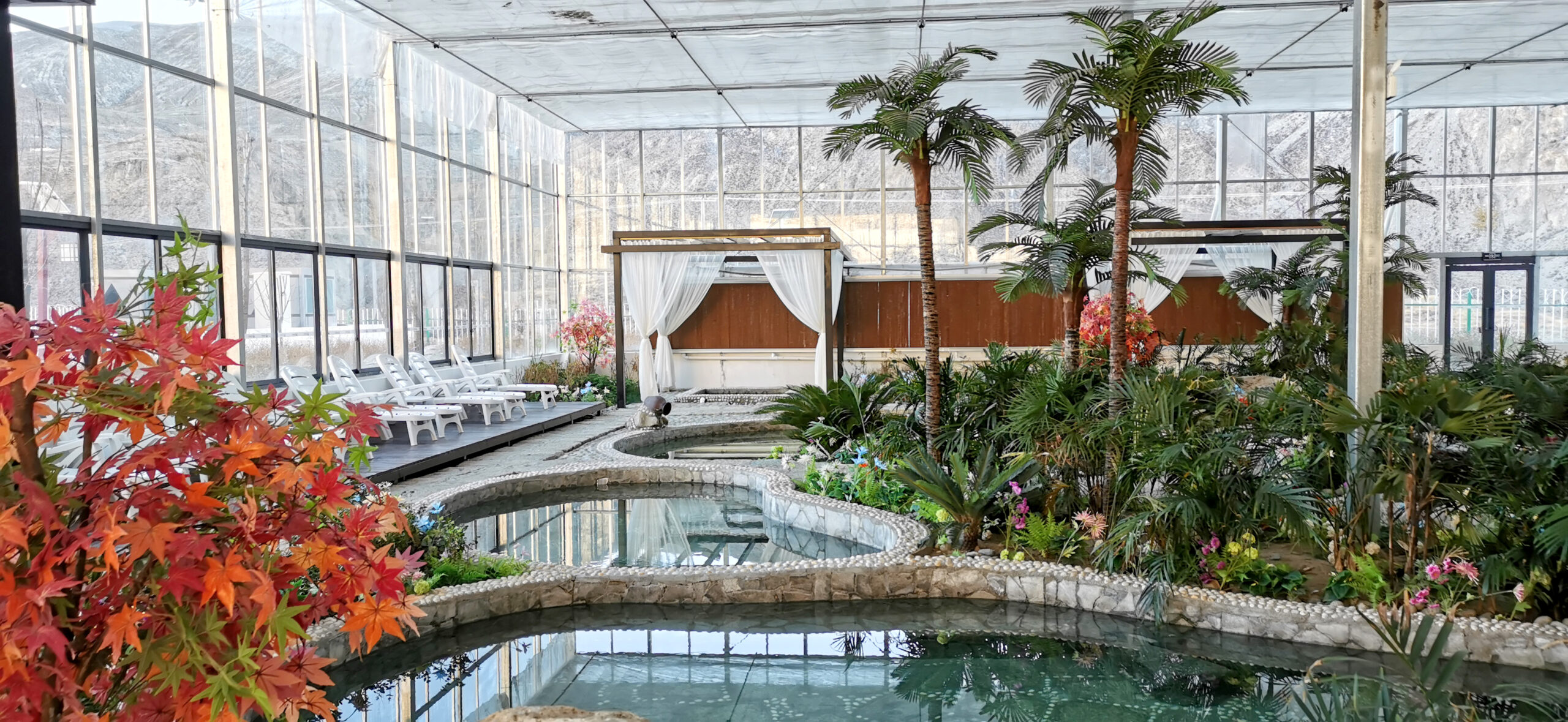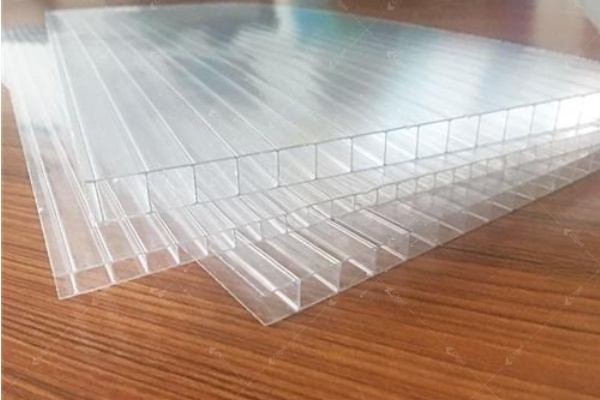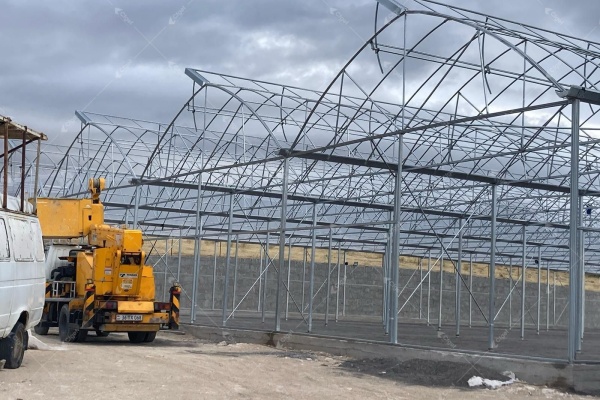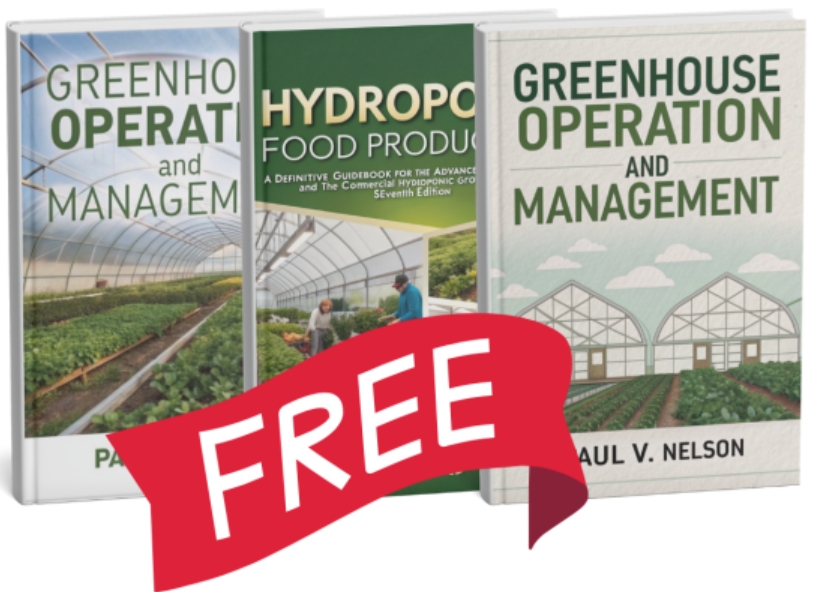Winter arrives and your plants suffer from freezing temperatures. Your heating bills skyrocket while crops fail. These greenhouse warming solutions will save your harvest and reduce costs.
Effective greenhouse insulation combines proper covering materials, heat storage techniques, and efficient heating systems. Smart insulation design can reduce heating costs by 40% while maintaining optimal growing temperatures throughout winter months.

After 29 years of designing greenhouse systems across different climates, I have seen countless growers struggle with winter heating challenges. From Southeast Asia’s unexpected cold snaps to Central Asia’s harsh winters, the principles remain the same. Smart insulation starts before winter arrives.
Don’t Miss:——Commercial Hydroponic Greenhouse Systems: How Do Design, Construction, and ROI Interconnect?
You might like:——What is a Smart Greenhouse? The Ultimate Guide to Automated Growing
First Step in Greenhouse Insulation: Choosing the Right Covering and Insulating Materials?
Your greenhouse covering determines how much heat escapes during cold nights. Poor material choices waste energy and money. The right insulation materials create a thermal barrier that keeps warmth inside.
Double-wall polycarbonate panels provide superior insulation compared to single-layer materials. These panels trap air between layers, creating natural insulation that reduces heat loss by up to 50% compared to glass or single-layer plastic.

The covering material you choose becomes the foundation of your entire heating strategy. Single-layer materials like basic plastic film or glass allow heat to escape rapidly during winter nights. This forces your heating system to work overtime, driving up energy costs significantly.
Double-wall polycarbonate panels solve this problem through their unique structure. The air gap between the two polycarbonate layers acts as natural insulation. This design principle works the same way as double-pane windows in homes. The trapped air cannot circulate, so it forms a barrier against heat transfer.
I recommend 8mm twin-wall polycarbonate for most commercial applications. The 8mm thickness provides excellent insulation while maintaining good light transmission. Thicker panels like 16mm offer even better insulation but reduce light levels. Your crop requirements determine the best balance.
For film greenhouses, we use a different approach. Double-layer inflation systems create an air gap similar to polycarbonate panels. The outer layer protects against weather while the inner layer maintains the growing environment. A small blower keeps the air gap inflated continuously.
At CFGET, we often design greenhouses with additional slope additions around the perimeter. These slopes serve two purposes. First, they provide wind protection which reduces heat loss through air infiltration. Second, they create a double-layer effect for the side walls, similar to having two covering systems in one design.
Utilizing Soil Heat Storage and Livestock Heat to Warm Your Greenhouse?
Underground soil stores massive amounts of heat energy during warm periods. This stored heat releases slowly during cold nights. Natural heat sources reduce your dependence on expensive heating systems.
Soil heat storage systems can maintain greenhouse temperatures 5-10 degrees warmer than outside air without additional heating. These systems work by storing daytime solar energy in thermal mass and releasing it gradually during nighttime hours.
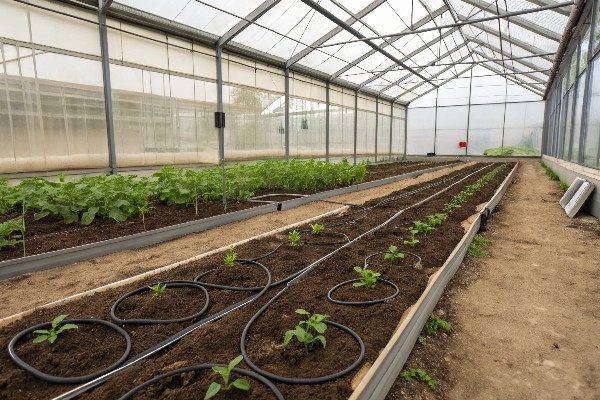
Thermal mass creates a natural heating and cooling system inside your greenhouse. During sunny winter days, soil, concrete, and water containers absorb heat energy. This stored energy releases slowly when air temperatures drop at night.
The most effective thermal mass systems use water containers or concrete thermal walls. Water stores more heat per volume than soil or concrete. Fifty-gallon drums painted black and positioned along the north wall create excellent heat storage. The black paint helps absorb solar energy during the day.
Concrete thermal walls work similarly but require more planning. These walls need to be positioned where they receive direct sunlight during winter months. The wall thickness affects storage capacity. A 12-inch thick concrete wall stores significantly more heat than a 6-inch wall.
Some growers use livestock heat in larger greenhouse operations. Animals like rabbits, chickens, or goats generate body heat continuously. Their respiration also adds humidity and carbon dioxide, which plants use for photosynthesis. This approach works best in larger structures where animal odors can be managed properly.
Rock beds underneath growing areas provide another thermal mass option. These systems use fans to circulate warm air through underground rock storage during the day. At night, the rocks release stored heat back into the greenhouse. This approach requires more initial investment but provides consistent results.
The key to any thermal mass system is calculating the right amount for your greenhouse size. Too little thermal mass provides minimal benefit. Too much thermal mass can actually cool the greenhouse by absorbing heat faster than it can be replaced.
Efficient Heating Systems Explained: Hot Air Blowers, Heat Recovery & Geothermal?
Modern heating systems offer various efficiency levels and fuel options. Wrong heating choices waste money on energy bills. The right system matches your greenhouse size, local fuel costs, and climate conditions.
High-efficiency heating systems like heat recovery ventilators and geothermal systems can reduce heating costs by 60-80% compared to basic propane heaters. These systems recycle waste heat and use renewable energy sources for consistent greenhouse warming.
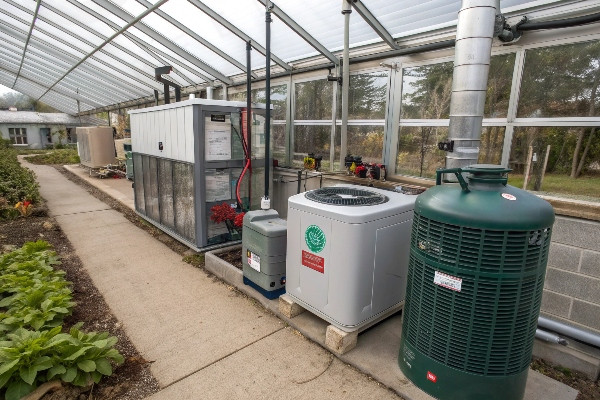
Hot air blowers represent the most common heating solution for commercial greenhouses. These systems burn natural gas, propane, or heating oil to generate warm air. Modern units include heat exchangers that capture waste heat from exhaust gases. This design prevents combustion gases from entering the growing area while maximizing fuel efficiency.
The key advantage of hot air systems is their ability to distribute heat evenly throughout the greenhouse. Perforated polyethylene tubes carry heated air to different zones. This distribution system prevents hot spots near the heater and cold spots in distant areas. Even heat distribution improves plant growth and reduces disease problems.
Heat recovery ventilation systems capture heat from outgoing air and transfer it to incoming fresh air. These systems maintain proper ventilation while minimizing heat loss. A heat exchanger transfers thermal energy between the two air streams without mixing them. Fresh air enters pre-warmed, reducing the load on your primary heating system.
Geothermal systems use stable underground temperatures to heat greenhouses efficiently. These systems circulate water or antifreeze through underground loops. The earth maintains consistent temperatures year-round, typically 50-60 degrees Fahrenheit at six feet deep. Heat pumps extract this energy and concentrate it for greenhouse heating.
The initial cost of geothermal systems is higher than conventional heating. However, operating costs are significantly lower because you are using free earth energy instead of purchased fuel. Payback periods typically range from 5-10 years depending on local energy costs and system size.
Radiant heating systems use hot water circulation through pipes or electric cables. These systems heat objects and soil directly rather than heating air. This approach reduces heat loss through ventilation and creates more stable growing conditions. Root zone heating is particularly effective for many crops.
Combined heat and power systems generate electricity while producing heat for the greenhouse. These systems burn natural gas or biogas to run generators. Waste heat from electricity generation provides greenhouse heating. This approach is most effective for larger operations with significant electrical demands.
How to Choose an Economical Heater for a Small Greenhouse?
Small greenhouse owners need heating solutions that balance initial cost with operating efficiency. Oversized systems waste money on installation and operation. Undersized systems fail to maintain proper growing temperatures during cold periods.
For small greenhouses under 500 square feet, electric heaters with thermostatic controls provide the most economical solution. These heaters cost less initially and require minimal maintenance while providing precise temperature control for optimal growing conditions.
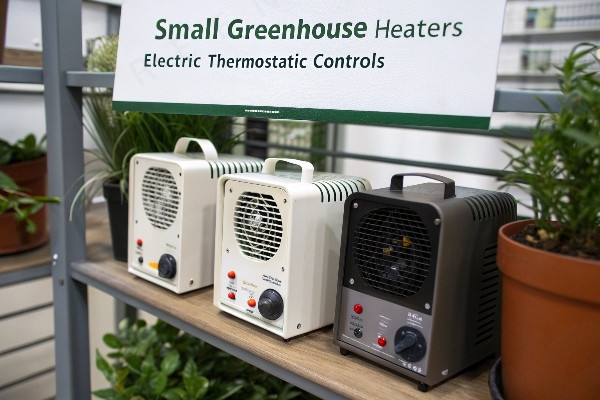
Electric heaters offer several advantages for small greenhouse applications. Installation costs are minimal because most small greenhouses already have electrical service. Electric heaters do not require fuel storage, venting systems, or complex installation procedures. Simple plug-in units work for the smallest structures.
Thermostatic controls are essential for any small greenhouse heater. These controls turn the heater on and off automatically based on temperature settings. This automation prevents overheating and reduces energy consumption. Look for heaters with accurate thermostats that maintain temperatures within 2-3 degrees of your target setting.
Propane heaters provide an alternative for areas with high electricity costs. Small propane units designed for greenhouse use include safety features like tip-over switches and oxygen depletion sensors. These heaters require proper ventilation to prevent carbon monoxide buildup and excess humidity from combustion.
Sizing calculations determine the right heater capacity for your greenhouse. Calculate the surface area of your greenhouse covering. Multiply this area by the temperature difference between inside and outside temperatures. Then multiply by a heat loss factor based on your covering material. Single-wall materials require 1.2 BTU per square foot per degree difference. Double-wall materials need about 0.8 BTU per square foot per degree difference.
Backup heating systems prevent crop loss during primary heater failures. Small electric heaters can serve as backup units for propane systems. Battery-powered heaters provide emergency heating during power outages. These backup systems do not need to heat the entire greenhouse, just prevent freezing damage.
Heating zones allow different temperature control in various greenhouse areas. Young plants may need warmer conditions than mature plants. Heat-loving crops require different temperatures than cool-season vegetables. Simple zone control uses separate heaters with individual thermostats for different areas.
At CFGET, we often recommend starting with a slightly oversized electric heater for small greenhouses. The extra capacity handles extreme weather events and provides faster recovery after ventilation periods. Modern electric heaters with variable output adjust their heating levels based on demand, so oversizing does not waste energy during mild weather.
Conclusion
Smart insulation and efficient heating systems transform winter greenhouse challenges into manageable operating costs while ensuring consistent crop production year-round.
